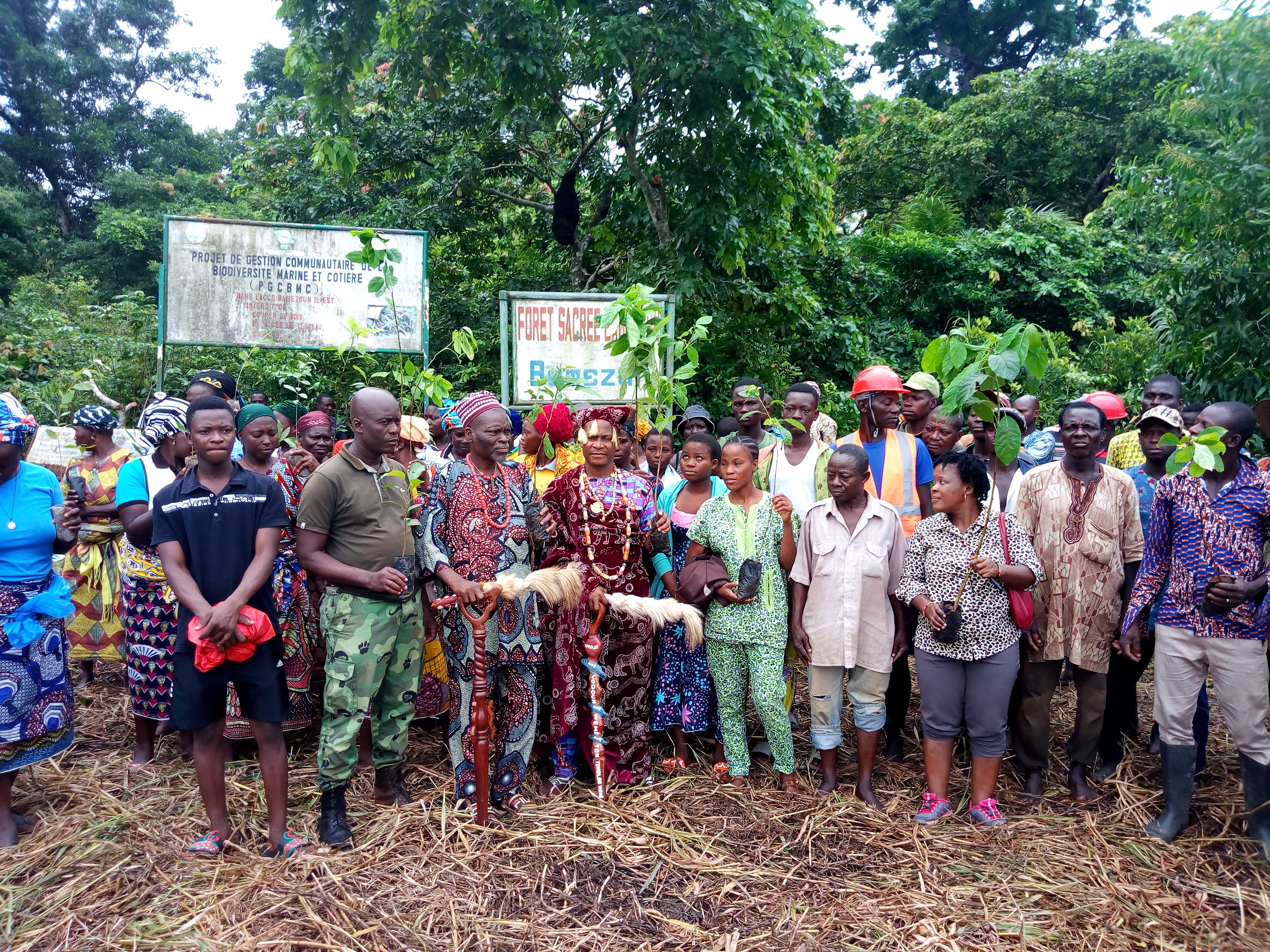Bamézoun, Bénin
Description
Bamézoun is a sacred forest in the municipalities of Aguégués and Dangbo, a region irrigated by the Ouémé river in southeast Benin. Spanning 47 hectares, Bamézoun has a combination of mangroves and moist broadleaf forests. Communities living in Bamézoun depend upon its natural resources for their livelihoods. These communities’ livelihoods are mobile, and they travel between settlements depending on the season. In addition to its ecological importance, Bamézoun is of religious and cultural significance to surrounding communities. Of particular importance is that the forest is home to the deity Oro, who is venerated by several family communities.

History and Activities
The origin of this forest goes back to the period of the ancestor Yahassa, grandson of Togbohonsou, ancestors of the Wemenos. He fled from the locality Aga, following the tribal war with the kingdom of Danhomè. After traveling along the Ouémé river, he finally found dry land in the forest and settled his community there. During his stay, he created the living environment of today through the landscape built inside this reserve. Over time, this reserve has become a sacred space on which ritual ceremonies are regularly held in homage to the ancestor. This forest also holds a cemetery used by the community over generations.
Conservation
Bamézoun is a biodiverse ICCA, sporting 85 plant species, 67 bird species, and four species of rare mammals. The rich biodiversity of Bamézoun has long been protected because of national restrictions relating to sacred and cultural worship spaces in the forest. The communities of Bamézoun strive to sustain cultural practices, to safeguard their traditions and to share the riches of the forest with their future generations. Like many ICCAs, biodiversity decline threatens Bamézoun, which is partially due to the agricultural activities of the forest communities over time. To mitigate this issue, forest communities have collaborated with the Benin Environmental Agency to create a buffer zone, reducing the impact of agricultural activities.
In addition to human pressures, other threats to this ICCA are development, climate change, conflict with other communities and inappropriate management. Indeed, the local management committee has difficulty surviving while monitoring the ICCA. There needs to be more support for municipal authorities to better manage this ICCA. More broadly, Bamézoun suffers from a lack of support from political authorities at various levels.

Governance and Management
Bamézoun is under a combination of community and state ownership. Indigenous and local communities carry out the governace of Bamézoun, with over 125 people involved. An indigenous peoples’ governing council and a local community governing council make the decisions on how Bamézoun is managed. The management itself is carried out by the Bamèzoun committee, which designs its activities around practices shared orally by the community.
The communities of Bamézoun have legal rights to all resources within the ICCA, though with certain constraints. The main objectives of the ICCA’s managers are to maintain and enhance these natural resources, as well as to preserve cultural practices, protect sacred sites, conserve the ICCA’s biodiversity, enhance land ownership security, and develop opportunities for tourism.
Lessons learned and next steps
Support of all kinds would be welcome by this ICCA, including support for strengthening communities’ capacity to protect the ICCA. Bamézoun would also welcome support for the development of ecotourism, enhanced information exchange and communication, and forest restoration.
This case study was originally published by UNEP-WCMC in May 2020. The content was provided by the custodians of this ICCA. The ICCA has been self-declared and has been through a peer-review process to verify its status. More details on this process can be found here. The contents of this website do not necessarily reflect the views or policies of UN Environment Programme or WCMC